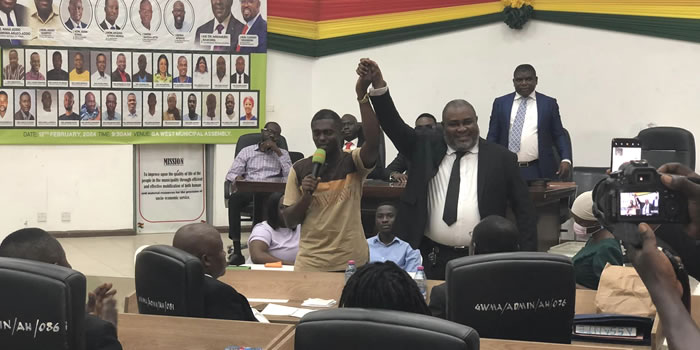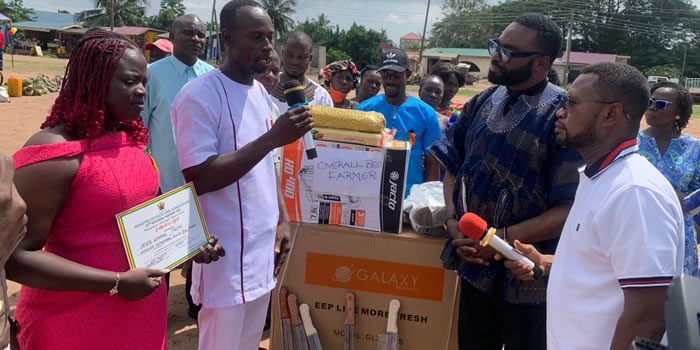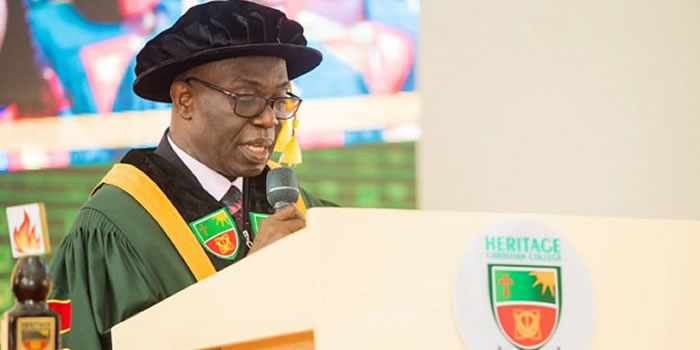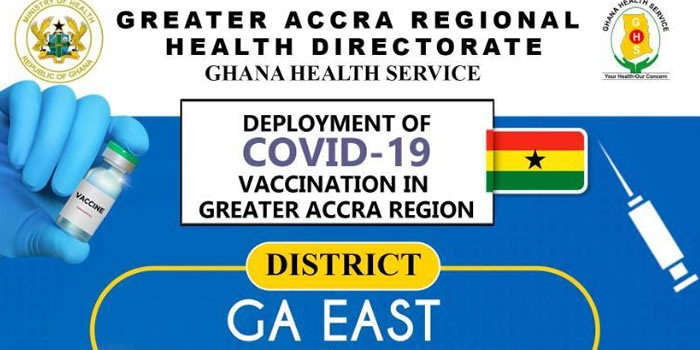

UTILITIES
Most parts of the Municipality are served with Water, Electricity and Telephone. Less than 10% of the population is served with pipe borne water from GWCL whilst the remaining relies on a combination of borehole water and streams.
About 55% of the population served with electricity from the national grid, whilst about 80% of the population has access to both fixed and mobile telephone.
• Vodafone Ghana
• MTN Ghana
• Tigo
• Expresso
• Glo Ghana
• Airtel Ghana
Transportation Network
Transportation – A large proportion of roads network is feeder roads. Their conditions are generally poor, majority are inaccessible especially during the rainy season.
The road condition statistics within the Municipality is as follows: 13% good; 21% fair and 66% poor.
The main Accra-Kumasi railway line passes through the Municipality at Amasaman, Opah and Adzen Kotoku. There are two main railway stations at Amasaman and Adzen Kotoku.
Markets
There are no major markets in the Municipality. The Assembly has established new satellite markets in the Amasaman and Ofankor areas.
Utilities
The Municipality is served by the three (3) utilities of Water, Electricity and Telephone. Less than half of the population is served with pipe borne water from the GWCL whilst the remaining relies on a combination of borehole water and streams. About 40% of the population is served by electricity from the national grid, and 70% of the population has access to fixed and mobile telephone.
Housing Infrastructure
Poor and inadequate housing is identified as one of the major problems confronting the people particularly the poor in rural settlements. A significant proportion of the people lack access to adequate housing and housing-related infrastructure including drainage, pavements, bridges, streets etc.
The condition of housing for poor families is often deplorable and not conducive to healthy living. People living in these houses are frequently exposed to adverse climatic and environmental conditions that impact negatively on their health and standard of living generally. Among the major causes for the current situation are the following;
- 62,000 virus was been numbered.
- absence of cost-effective housing technologies;
- limited financial resources of most poor families who also lack access to institutional finance on affordable terms;
- high cost of land particularly in the peri-urban areas;
- high population growth rate primarily due to high in-migration;
- limited participation of beneficiary communities and groups in housing Projects;
- rudimentary construction skills, limited institutional capacity to plan, design and manage housing projects for the poor;
- environmental determination including settlement, erosion, insanitary conditions, pollution, etc
Rural Housing
The desire of the Assembly to address the current situation in line with national policy has led to the setting up and linking of the Department of Rural Housing to the Works Department so as to forge a closer working relationship to deal with the problem.
The Assembly also seeks to make an effective and efficient utilization of the 5 percent share of the District Assembly Common Fund each year for the improvement of housing infrastructure in the district. With the Rural Housing Scheme supporting the training and development of skills of local artisans in communities, housing construction cost is expected to be significantly reduced to minimize the over-reliance on externally trained artisans whose services are most often unaffordable.
Through the use of this strategy communities would be sanitized and encouraged to make use of the mobilized locally available materials such as soil-stabilized blocks for housing delivery. The formation of housing solidarity groups or societies by beneficiary groups will enhance savings and share capital paid by members to provide the basis for a revolving fund to support individual’s housing projects.
Date Created : 11/20/2017 7:17:41 AM










 facebook
facebook
 twitter
twitter
 Youtube
Youtube
 +233 593 831 280
+233 593 831 280 0800 430 430
0800 430 430 GPS: GE-231-4383
GPS: GE-231-4383 info@ghanadistricts.com
info@ghanadistricts.com Box GP1044, Accra, Ghana
Box GP1044, Accra, Ghana